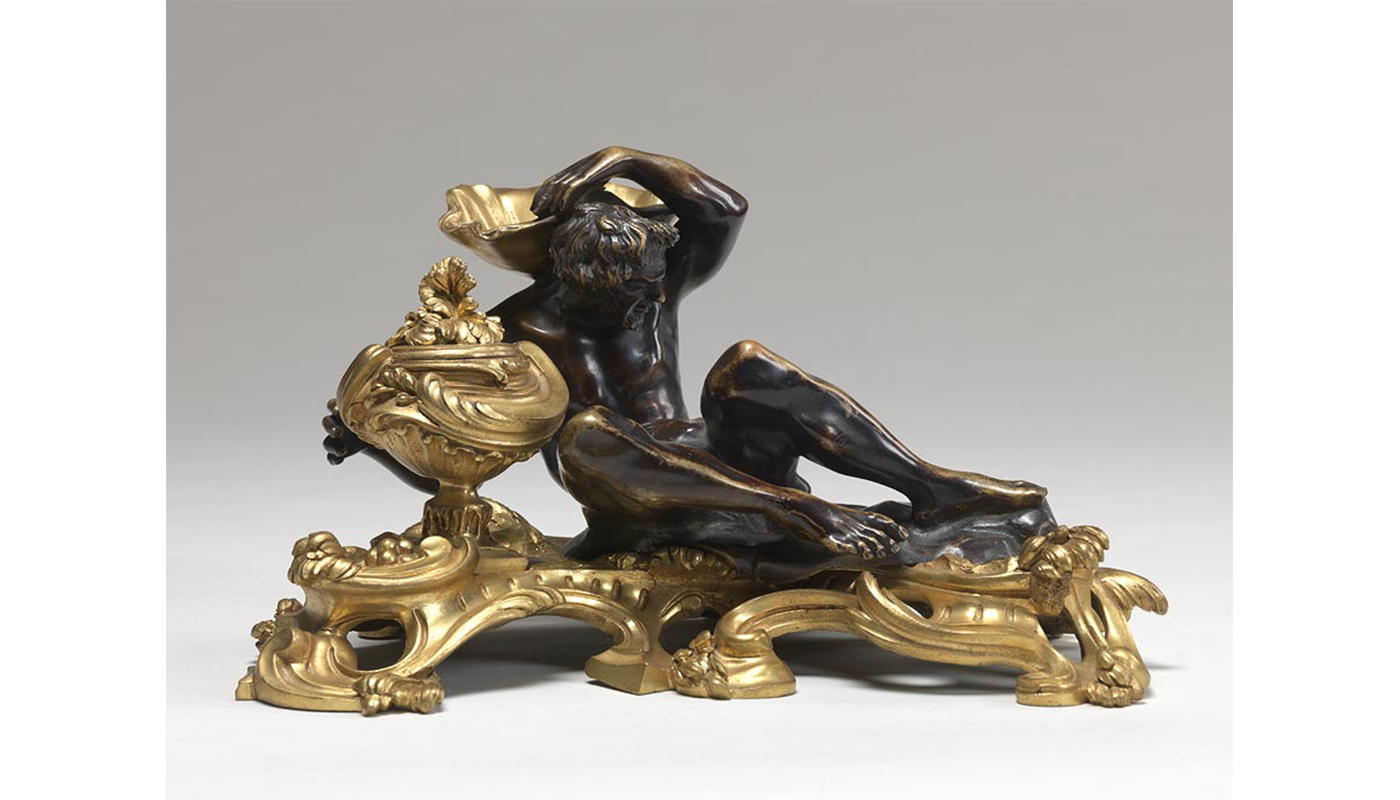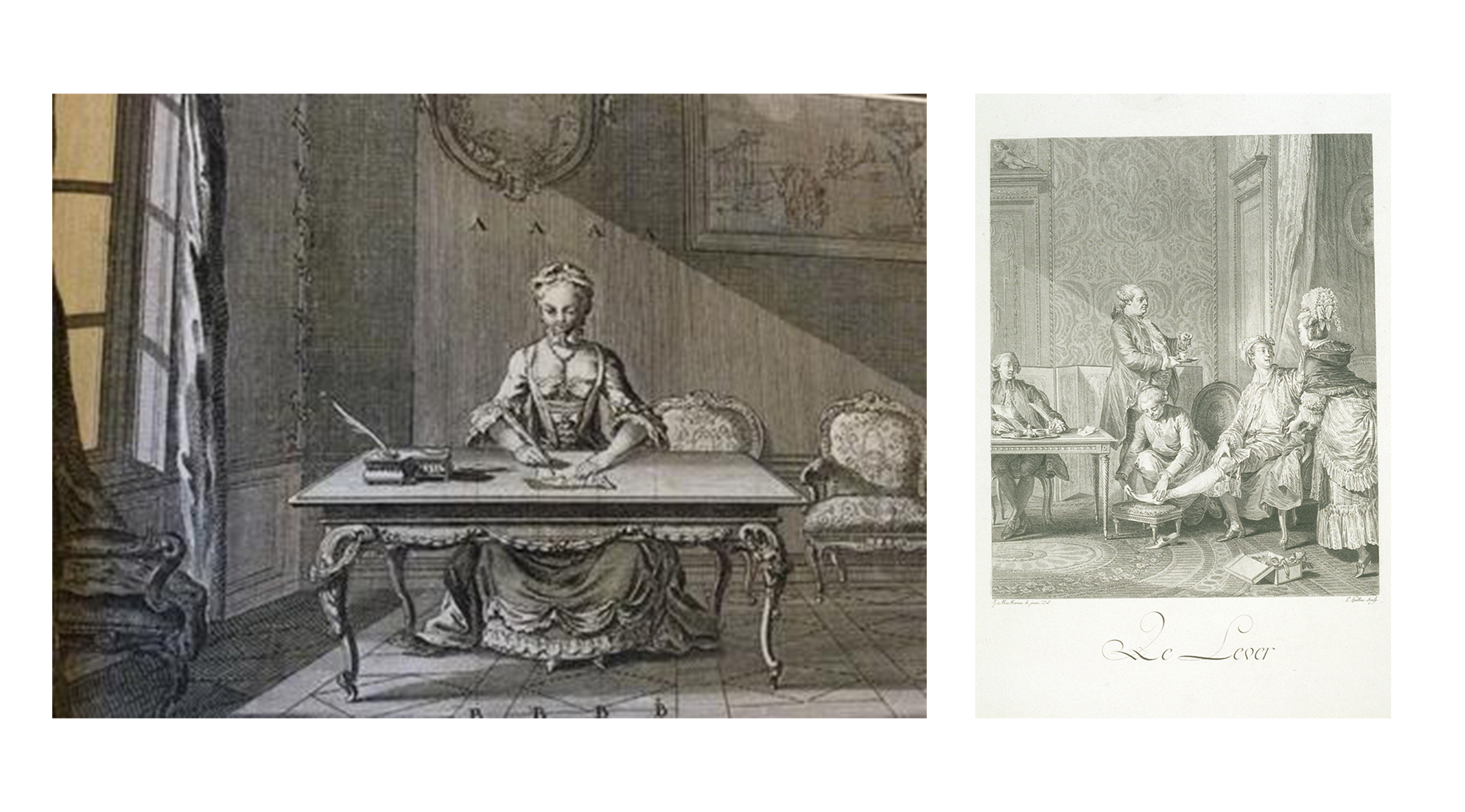
Luxury Objects in the Age of Marie Antoinette: Writing Utensils
The Smith College Museum of Art is dedicated to bringing out works on paper into the main galleries, where all visitors can see them. Since works on paper are more sensitive to light than other mediums, SCMA has installed special Works on Paper cabinets throughout the galleries for the display of prints, drawings and photographs. Today’s post is part of a series about the current installations of the Works on Paper cabinets, which will remain on view through August 2016.
Guest blogger Maddy Vogel ’19 is a Smith College student and one of the authors of this cabinet. This installation derives from a First Year Seminar in Fall 2015, Re-Membering Marie Antoinette, taught by Professor Janie Vanpée. In this seminar the students collaborated to create an online exhibition that examined the economic, social, and aesthetic roles of an array of luxury objects and cultural practices in the late eighteenth century.
The late eighteenth century in France was a moment of perfection and refinement in luxury craftsmanship: exquisitely crafted furniture, carved and painted wall paneling, refined fabrics—lace, muslin, velvets and silks—decorated with hand-painted or embroidered designs. Useful and decorative porcelain in brilliant colors and delicate patterns, imaginative coiffures and hats, all abounded in the interior spaces and on the bodies, respectively, of those from the wealthy ranks of society. Marie Antoinette, if not always the leader in setting a decorative trend, was highly conscious of fashion and showed refined taste in design and materials. Although the period style is called Louis XVI, it should rightly be named after her.

Unknown. French. Inkstand with River God, ca. 1750. Bronze on ormolu base. Purchased. SC 1958.42.
This bronze inkwell in the shape of river god was created between 1730 and 1750. Its gilt ormolu base and rococo motifs are typical of mid-eighteenth-century decorative objects crafted for the burgeoning luxury market, much like the writing implements featured in the print below, Le Lever. Although the artist who created this inkstand is unknown, a similar inkwell was made in Paris by Paul Sormani, whose works adhered to the styles of Louis XV and Louis XVI.

Left: From Diderot’s Encyclopédie. Paris, 1782–1832. Mortimer Rare Book Room, Smith College.
Right: Jean-Michel Moreau le Jeune. French, 1741–1814. Le Lever, from Monument du costume physique et moral de la fin du dix-huitième siècle ou tableaux de la vie, 1789. Engraving on off white laid paper. Purchased with the gift of Mrs. Charles Lincoln Taylor (Margaret Rand Goldthwait, class of 1921). SC 1964.24.13.
Writing played an important role in eighteenth-century French society. The daily act of corresponding with friends and acquaintances created social and business bonds as well as helped shape the personal identity of the writers. Moreau le Jeune’s print, Le Lever, features a typical scene of a secretary taking dictation from his noble master, who simultaneously dresses and attends to the morning business. The secretary writes at a bureau, specifically designed with a large flat surface to facilitate business correspondence. Quills, inkstands, paper, and writing desks were necessary instruments, but proper posture and elegant penmanship were equally important. Inkstands of porcelain, bronze, or silver, embellished with ornate designs, had a prominent place on writing desks designed to mold the writer’s hand, arm, and body into the ideal posture.